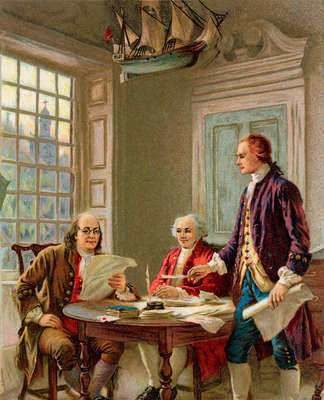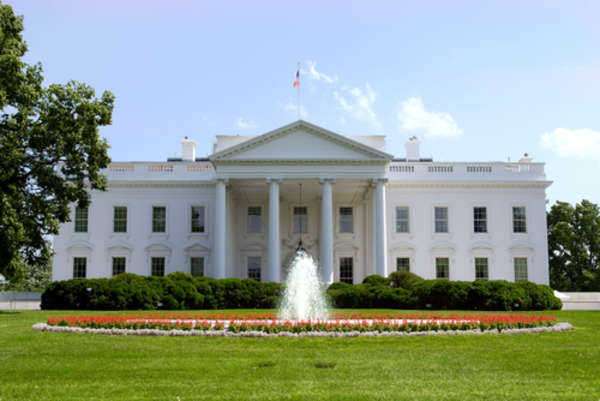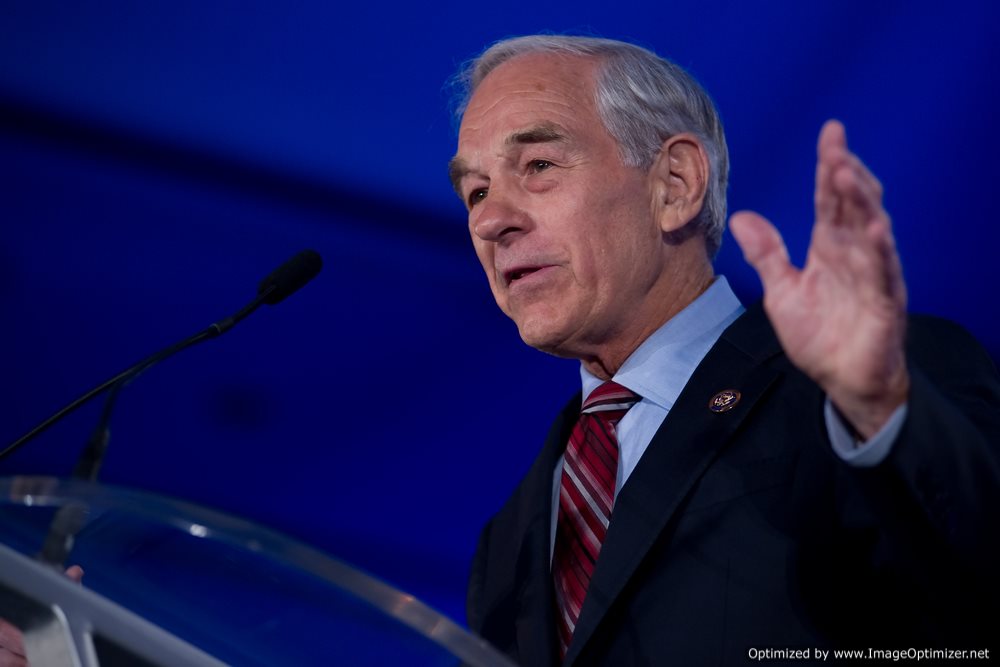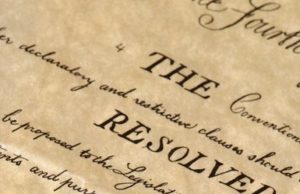
What are the Amendments?
An Amendment – also known as a Constitutional Amendment – is textual and legislative adjustments with regard to the alteration of the original text expressed within the initial version of the Constitution of the United States, which was ratified on June 21st, 1788. The Bill of Rights is a collection of the first 10 Constitutional Amendments passed subsequent to the ratification of the Constitution; the Bill of Rights was passed within 15 years of the initial date of ratification.
History of Amendments
During the Constitutional Convention, James Madison introduced a concern addressing the absence of a Constitutional Clause providing a system for both the amendment and adjustment of the original text:
· Prior to the ratification of the Constitution, an applicable clause formulating an amendment process was created in order to substantiate any adjustment-based legislative process undertaken
· As of 2011, there currently exist 27 Amendments to the Constitution of the United States
The 27 Constitutional Amendments
The following list illustrates each of the 27 Amendments in conjunction with their respective contents and ratification:
1st Amendment
· Date Proposed: September, 25th 1789
· Date Ratified: December 15th, 1791
· Contents of the Amendment: This Amendment affords citizens of the United States with the freedom of religion, the freedom of the press, the freedom of speech, and the right of assembly
· States Participatory in Ratification: 12 out of 12 existing States
· Additional Classification: Bill of Rights
2nd Amendment
· Date Proposed: September, 25th 1789
· Date Ratified: December 15th, 1791
· Contents of the Amendment: The right to bear arms in a lawful manner with regard to self-protection; firearms covered under the 2ndAmendment do not address service within the Militia
· States Participatory in Ratification: 12 out of 12 existing States
· Additional Classification: Bill of Rights
3rd Amendment
· Date Proposed: September, 25th 1789
· Date Ratified: December 15th, 1791
·: 12 out of 12 existing States
· Additional Classification: Bill of Rights
4th Amendment
· Date Proposed: September, 25th 1789
· Date Ratified: December 15th, 1791
· Contents of the Amendment: The 4thAmendment prohibits the unlawful search and seizure of resident belonging to citizens of the United States of America; this amendment also defines the rights of privacy awarded to citizens of the United States
· States Participatory in Ratification: 12 out of 12 existing States
· Additional Classification: Bill of Rights
5th Amendment
· Date Proposed: September, 25th 1789
· Date Ratified: December 15th, 1791
· Contents of the Amendment: The 5thAmendment addresses the modern incarnation of the ‘Right to remain silent’; this Amendment also prevents the unlawful and unethical abuse of power undertaken by a governing body
· States Participatory in Ratification: 12 out of 12 existing States
· Additional Classification: Bill of Rights
6th Amendment
· Date Proposed: September, 25th 1789
· Date Ratified: December 15th, 1791
· Contents of the Amendment: The 6thAmendment addresses legal procedure undertaken with regard to the prosecution – and investigation – of alleged criminal activity; this Amendment includes the right to a judicially-sound trial
· States Participatory in Ratification: 12 out of 12 existing States
· Additional Classification: Bill of Rights
7th Amendment
· Date Proposed: September, 25th 1789
· Date Ratified: December 15th, 1791
· Contents of the Amendment: The 7thAmendment affords individuals undergoing judicial trials with the right to be tried in accordance with the presence of a jury; juries present within judicial trials are indicated to consist of an individual’s ‘peers’
· States Participatory in Ratification: 12 out of 12 existing States
· Additional Classification: Bill of Rights
8th Amendment
· Date Proposed: September, 25th 1789
· Date Ratified: December 15th, 1791
· Contents of the Amendment: The 8thAmendment addresses legal criminal procedure; this Amendment prohibits punitive recourse classified as ‘cruel and unusual’ with regard to prosecution, as well as the prohibition of an excessive bail process
· States Participatory in Ratification: 12 out of 12 existing States
· Additional Classification: Bill of Rights
9th Amendment
· Date Proposed: September, 25th 1789
· Date Ratified: December 15th, 1791
· Contents of the Amendment: The 9thAmendment serves as legislative protection with regard to corollary Amendments within the Bill of Rights; this Amendment disallows for the violation of civil liberties and unlawful expansion of governmental power
· States Participatory in Ratification: 12 out of 12 existing States
· Additional Classification: Bill of Rights
10th Amendment
· Date Proposed: September, 25th 1789
· Date Ratified: December 15th, 1791
· Contents of the Amendment: The 10thAmendment addresses the apportionment process latent within administrative responsibilities; this Amendment expressed that any or all administrative powers that have not been claimed by Federal or State governments become the responsibility of the general populace
· States Participatory in Ratification: 12 out of 12 existing States
· Additional Classification: Bill of Rights
11th Amendment
· Date Proposed: March 4th, 1797
· Date Ratified: February 7th, 1795
· Contents of the Amendment: 13 of the 15 existing States
· States Participatory in Ratification: The 11thAmendment disallows lawsuits to take place on a national basis, as well as an international one; specific lawsuits must be conducted on a state level in lieu of a national one
12th Amendment
· Date Proposed: December 9th, 1803
· Date Ratified: June 15th, 1804
· Contents of the Amendment: The 12thAmendment addresses the election process with regard to the establishment of an Electoral College; this administrative process solidifies a process of legislative representation with regard to Federal elections
· States Participatory in Ratification: 14 out of the 16existing States
13th Amendment
· Date Proposed: April 8th, 1864
· Date Ratified: December 6th, 1865
·:Although failing to receive unanimous ratification, the 13th Amendment has since received subsequent – and collective – ratification from all applicable States
· Additional Classification: Reconstruction Amendments
14th Amendment
· Date Proposed: June 13th, 1866
· Date Ratified: July 9th, 1868
· Contents of the Amendment: The 14thAmendment expressed that every citizen of the United States is permitted to be covered under the jurisdiction of the Constitution of the United States; as per the 1stAmendment, individuals – regardless of race and gender – are permitted to enjoy the rights implicit within the Constitution
·: Reconstruction Amendments
15th Amendment
· Date Proposed: February 26th, 1869
· Date Ratified: February 3rd, 1870
· Contents of the Amendment: The 15thAmendment allows all male citizens of the United States – regardless of race, ethnicity, religion, and creed – the right to vote
· States Participatory in Ratification: Although failing to receive unanimous ratification, the 15h Amendment has since received subsequent – and collective – ratification from all applicable States
· Additional Classification: Reconstruction Amendments
16th Amendment
· Date Proposed: June 16th, 1909
· Date Ratified: February 13th, 1913
· Contents of the Amendment: The 16thAmendment formulates the revenue process enacted within the United States of America with regard to the legality corollary to the levying of taxation
· States Participatory in Ratification: 42 out of the 6 existing States
17th Amendment
· Date Proposed: May 13th, 1912
· Date Ratified: April 8th, 1913
· Contents of the Amendment: The 17thAmendment formulates the election process with regard to Senatorial appointment
· States Participatory in Ratification: 38 out of the existing 48 States
18th Amendment
· Date Proposed: August 1st, 1917
· Date Ratified: January 16th, 1919
· Contents of the Amendment: The 18thAmendment outlines and mandates the imposition of the prohibition of alcoholic beverages on a national level
· States Participatory in Ratification: 46 out of the 48 existing States
19th Amendment
· Date Proposed: June 14th, 1919
· Date Ratified: September 21st, 1920
· Contents of the Amendment: The 15th Amendment allows all female citizens of the United States the right to vote; this Amendment is considered to be the culmination of the Women’s Suffrage Movement
· States Participatory in Ratification: 47 out of the 48 existing States
20th Amendment
· Date Proposed: March 2nd, 1932
· Date Ratified: January 23rd, 1933
· Contents of the Amendment: The 20thAmendment outlines the length and procedural administration with regard to Congressional terms
· States Participatory in Ratification: All 48 existing States
21st Amendment
· Date Proposed: February 20th, 1933
· Date Ratified: December 5th, 1933
· Contents of the Amendment: The 21stAmendment overturned the 18thAmendment; the 18thAmendment, which outlined prohibition, deemed alcoholic beverages illegal – the 21stAmendment reinstated the conditional legality of alcoholic beverages
· States Participatory in Ratification: All 48 existing States
22nd Amendment
· Date Proposed: March 21st, 1947
· Date Ratified: February 27th, 1951
· Contents of the Amendment: The 22ndAmendment outlines the process and procedure latent within individual, respective Presidential terms
· States Participatory in Ratification: All 48 existing States
23rd Amendment
· Date Proposed: June 17th, 1960
· Date Ratified: March 29th, 1961
· Contents of the Amendment: The 23rdAmendment entitles residents of Washington D.C. to representation within the Electoral College
· States Participatory in Ratification: 41 out of the 50 existing States
24th Amendment
· Date Proposed: August 27th, 1962
· Date Ratified: January 23rd, 1964
· Contents of the Amendment: This Amendment revokes the legality and expressed legitimacy of the Poll Tax
· States Participatory in Ratification: 42 out of the existing 50 States
25th Amendment
· Date Proposed: July 6th, 1965
· Date Ratified: February 10th, 1967
· Contents of the Amendment: The 25thAmendment outlines a contingency replacement process in the event of the untimely death of the President of the United States
· States Participatory in Ratification: 47 out of the 50 existing States
26th Amendment
· Date Proposed: March 23rd, 1971
· Date Ratified: July 1st, 1971
· Contents of the Amendment: This Amendment enacts a national adjustment of the voting age; as a result of the 26thAmendment, 18 became the age for suffrage
· States Participatory in Ratification: 42 out of the existing 50 States
27th Amendment
· Date Proposed: September 25th, 1789
· Date Ratified: May 12th, 1992
· Contents of the Amendment: This Amendment addresses the limit for rate-based earning on the part of members of Congress; this Amendment prohibits the increase of such wages mid-term
· States Participatory in Ratification: 45 out of the existing 50 States






















